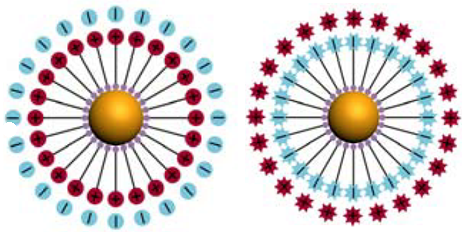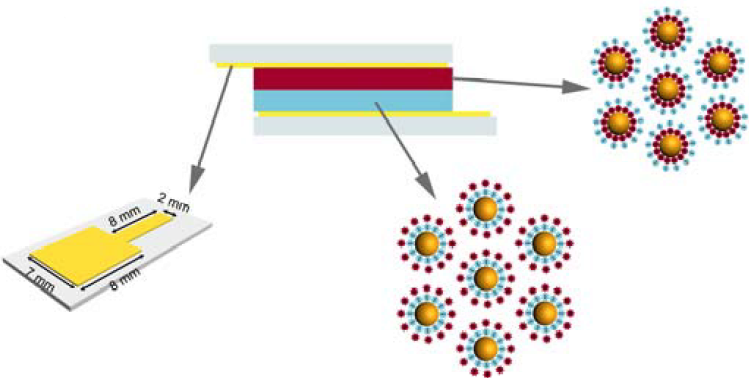Future computers that modify themselves
October 17, 2011

Nanoparticles with oppositely charged surfaces (credit: Hideyuki Nakanishi et al./Nature Nanotechnology)
Scientists at Northwestern University have developed a new nanomaterial that can “steer” electrical currents. The development could lead to a computer that can simply reconfigure its internal wiring to become an entirely different device, based on changing needs.
As electronic devices are built smaller and smaller, the materials from which the circuits are constructed begin to lose their properties and begin to be controlled by quantum mechanical phenomena. Reaching this physical barrier, many scientists have begun building 3-D circuits by stacking components on top of one another.
Nanoparticle-based electronics
The Northwestern team has taken a fundamentally different approach. “Our new steering technology allows use to direct current flow through a piece of continuous material,” said Bartosz A. Grzybowski, professor of chemical and biological engineering in the McCormick School of Engineering and Applied Science. “Streams of electrons can be steered in multiple directions through a block of the material — even multiple streams flowing in opposing directions at the same time.”
The Northwestern material combines different aspects of silicon- and polymer-based electronics to create a new class of electronic materials: nanoparticle-based electronics. Imagine a single device that reconfigures itself into a resistor, a rectifier, a diode, or a transistor based on signals from a computer.

Nanoparticles drop-cast onto gold electrodes to form a p-n transistor junction (credit: Hideyuki Nakanishi et al./Nature Nanotechnology)
The hybrid material is composed of electrically conductive particles, each five nanometers in width, coated with a special positively charged chemical. The particles are surrounded by negatively charged atoms that balance out the positive charges fixed on the particles. By applying an electrical charge across the material, the small negative atoms can be moved and reconfigured, but the relatively larger positive particles are not able to move.
This creates regions of low and high conductance that can be modified; the result is the creation of a directed path that allows electrons to flow through the material. Old paths can be erased and new paths created by pushing and pulling the negative atoms, creating more complex electrical components.
Ref.: Hideyuki Nakanishi, et al., Dynamic internal gradients control and direct electric currents within nanostructured materials, Nature Nanotechnology, 2011; [DOI:10.1038/nnano.2011.165]